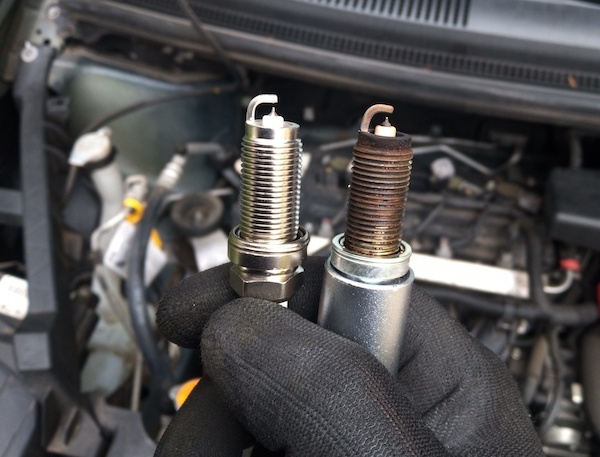Posted on 9/30/2022

For your engine to start and continuously run, it needs three things: air, fuel, and a spark. Without spark plugs, the part that sparks the fuel and air mixtures, your engine simply would not run. Your car may stop working until you get them fixed. Consequently, you should maintain and change your spark plugs on time. While there isn’t a specific timetable, your vehicle’s handbook may list an approximated mileage range for replacing spark plugs. To back track, a spark plug is a component that is connected to the engine's cylinder and generates a spark for combustion. The spark’s energy is provided by the battery. They are made of metals like copper, nickel, iridium, and platinum and insulated by ceramic. Without spark plugs, your pistons will not fire. What Are The Signs of Worn Spark Plugs? Problems starting vehicle. Rough idling. Engine pinging or knocking. Poor gas mileage. Spark plugs have larger gaps. How Often Should You Replace ... read more
Posted on 9/28/2022
.jpg)
Next to your engine, there is nothing more important than the transmission system. The engine provides power to the vehicle, but the transmission is what actually makes it move. Like the engine, your transmission also needs periodic maintenance to stay healthy. The good news is transmission service isn't required as often as oil changes. Still, it is something that must be done when the time comes. How Often Should I Have My Transmission Serviced? This will vary somewhat from vehicle to vehicle and driver to driver. The general rule of thumb is somewhere between every 30,000 and 60,000 miles. Some older vehicles or those that are driven harder than average (up steep hills, carrying/towing heavy loads, etc.) may require transmission service more often. Other cars that aren't pushed too hard may be able to go a little longer in between transmission maintenance. At the very least, you will want to have your transmission fluid checked with every service vis ... read more
Posted on 9/21/2022

The fall season is here and that usually means more rain in Northern Delaware. We will even encounter some ice and snow as the winter season approaches. Bad weather can impact your visibility as a driver, as well as the vehicle's handling. It's important to be safe and keep your car running right no matter what the weather brings. Here are a few automotive services to consider this time of year: Tire Care You depend on your tires to effectively grip the road. Wet or icy conditions can severely compromise your traction when you need it most. Make sure your tires are in good shape with healthy, even treads. Get them rotated regularly and replace them if the tread levels are getting too low. Brake Service Obviously, your brake system is extremely important in bad weather conditions. You need to be able to stop and slow d ... read more
Posted on 9/14/2022
.jpg)
Sharon recently visited Fox Run Auto for the first time after a recommendation from her niece. Her car needed repairs and she wanted an honest assessment from a trustworthy mechanic. Our team took the time to inspect her vehicle and walk her through a detailed inspection report before proceeding with any repair services. That is our standard process at Fox Run Auto. "They provided very professional and timely service," Sharon says. "Rob [Hurt, Lead Service Advisor] took time to explain everything and helped me understand my options. My niece referred me here as I live in MD but work in DE." The initial vehicle inspection is the most important step in the process at F ... read more
Posted on 9/7/2022
.jpg)
Oil changes and tire rotations are the two most common types of automotive maintenance services. They are generally done at the same time. That makes it easier to remember and you can kill two birds with one stone during your vehicle maintenance visits. Some people like to do their own oil changes at home if they know what they are doing. Rotating the tires can be a little trickier without a proper lift. What is a Tire Rotation? The idea behind rotating the tires is pretty simple. You switch the wheels and tires around. In most cases, the rear tires will be moved to the front (generally switching sides, as well) and the front tires will move to the back. Most mechanics will follow standard tire rotation patterns based on the vehicle's drive system. In other words, an all-wheel drive car or 4x4 truck may have a different pattern than a ... read more